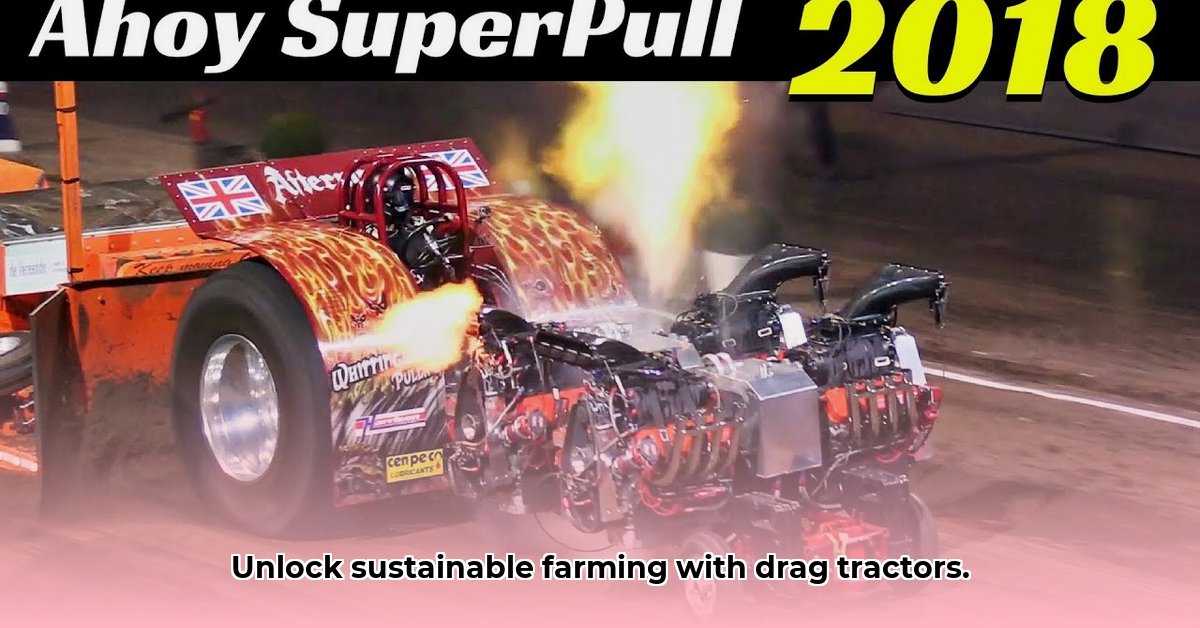
Drag tractors, also known as drag harrows, are a staple in many farming operations. But how do these seemingly simple tools fit into the broader picture of sustainable agriculture? This guide explores the multifaceted role of drag tractors, examining both their potential benefits and drawbacks, and offering practical advice for environmentally conscious farmers. For more on tractor types, see this helpful resource.
Understanding Drag Harrows and Their Mechanics
Drag harrows are agricultural implements designed to level and smooth the soil surface, preparing it for planting. They consist of a frame with multiple tines (metal teeth) that break up clods, remove weeds, and create a uniform seedbed. Different types of drag harrows exist, varying in weight, tine design, and working width. Heavier models are suited for tougher soil conditions requiring deeper tillage, while lighter models are better for finer soils where less aggressive tillage is needed. Choosing the right tool for the specific soil type is crucial for optimal results and minimal environmental impact.
The Impact of Drag Harrows on Soil Health
The effect of drag harrows on soil health is complex and context-dependent. While they can improve seed-to-soil contact and weed control, excessive use can lead to negative consequences. Intensive harrowing can compact soil, reducing water infiltration and aeration, vital for healthy root growth. Compaction can also increase runoff and erosion, washing away topsoil rich in organic matter and nutrients. However, when used judiciously, drag harrows can improve soil aeration and create a favorable environment for germination. Understanding the nuances of your specific soil type and climate is key to determining the appropriate level of harrowing. Research consistently shows that excessive tillage practices reduce soil biodiversity and can negatively impact long-term soil health (Lal, 2004).
Sustainable Alternatives and Modifications
Sustainable agriculture often prioritizes minimal soil disturbance. No-till farming and cover cropping are effective alternatives that reduce or eliminate the need for intensive tillage. These methods help maintain soil structure, improve water retention, and enhance biodiversity. However, drag harrows may still have a role in specific situations. Modifications to traditional drag harrows, such as lighter tines or reduced working depth, can minimize their environmental impact. Furthermore, integrating drag harrowing with other sustainable practices, such as cover cropping, can balance the benefits of soil preparation with the preservation of soil health. Innovative tine designs aiming for reduced soil disturbance are also actively being developed (Schulte et al., 2018).
Economic Considerations
The economic viability of drag harrow use must consider several factors. The initial investment cost is generally lower compared to other tillage methods. However, operational costs, including fuel consumption and labor, must also be factored in. Excessive harrowing leads to increased fuel consumption and potentially more passes, incurring additional costs. The long-term effects on soil health should significantly influence the economic analysis. Decreased yields due to soil degradation can easily outweigh short-term cost reductions. Government subsidies for sustainable agricultural practices might also offset some of the costs for farmers adopting environmentally friendly techniques. A comprehensive cost-benefit analysis, that considers both short and long-term effects, is essential.
A Practical Guide to Sustainable Drag Harrow Use
Employing drag harrows sustainably requires a thoughtful approach:
- Assess Soil Conditions: Before using a drag harrow, evaluate your soil type, moisture level, and structure. Avoid harrowing wet soils to prevent compaction and erosion.
- Optimize Tillage Depth and Intensity: Minimize the number of passes and adjust the tillage depth to suit your specific soil and crop needs. Shallow passes are generally preferable to reduce soil disturbance.
- Choose the Right Tool: Select a drag harrow appropriate for your soil type and tractor horsepower. Lighter models are better suited for finer soils.
- Integrate with Other Practices: Combine drag harrowing with no-till farming, cover cropping, or crop rotation to maximize benefits and minimize negative impacts.
- Monitor Soil Health: Regularly monitor key soil indicators – organic matter content, structure, and water infiltration – to assess the effects of harrowing and adjust your methods accordingly.
Future Trends and Innovations
Ongoing advancements in drag harrow technology promise to improve efficiency and reduce environmental impact. Lighter materials, optimized tine designs, and more precise control systems are emerging. Precision agriculture technologies, such as GPS guidance and variable-depth tillage, offer the potential for even greater efficiency and targeted soil preparation. These innovations are crucial for achieving sustainable intensification in agriculture.
Key Takeaways:
- Drag harrows, when used responsibly, can be valuable tools in sustainable farming.
- Soil type and moisture content are crucial considerations for effective and sustainable harrowing.
- Minimizing passes and adjusting harrow weight help prevent soil compaction and erosion.
- Combining drag harrowing with other sustainable techniques maximizes positive impacts.
- A long-term perspective, considering soil health and fertility, is crucial for sustainable farming practices.
References:
- Lal, R. (2004). Soil erosion and the global carbon cycle: Synergies between soil management and climate change. Global Change Biology, 10(10), 1689-1696.
- Schulte, R. P. O., et al. (2018). Sustainable intensification of agriculture: Concepts, indicators, and methods. Agriculture, Ecosystems & Environment, 261, 102-112.